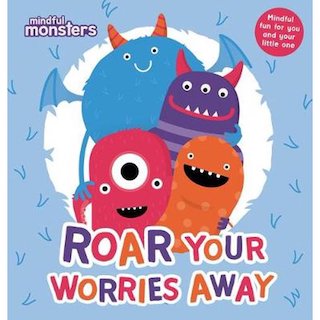Books for Pre-schoolers About Dealing with Anxiety
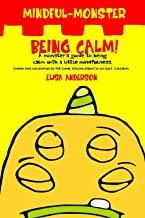 Mindful Monster - Being Calm!
Mindful Monster - Being Calm!
Elisa Anderson
Ugg, Homework! Many Eyed Monster has a problem…his HOMEWORK! After getting confused while doing his homework, Many Eyed Monster turns to his friend, Mindful Monster for a little help clearing his head. Mindful Monster is always willing to help his friends and teaches Many Eyed Monster a little mindful exercise for calmness. After a little coaching from Mindful Monster, Many Eyed Monster is able to reset his brain so that he can find the solution to his homework problem. Mindful-Monster Being Calm! is a great book to introduce readers to the mindfulness technique of deep breathing and focusing on happy thoughts to get their mind reset for a challenging task. This book is perfect for younger readers to start conversations on regulating frustrations when faced with a difficult task. (RUR)
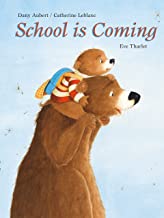 School Is Coming
School Is Coming
Dany Aubert, Catherine Lelanc, and Eve Tharlet
School is going to start soon for Martin and he is scared to go, even though his Mama keeps talking about all the wonderful things he’ll experience when he’s there. After talking with Martin about his fears, Mama and he make a plan to answer all of his “what-if” questions and help Martin feel more confident. Martin begins to look forward to school and it helps that Martin’s younger sister, Anna, is very envious of all the things that Martin will get to do. Martin and Anna are adorably illustrated in this nice story that may help an adult and child understand how to cope with those “what-ifs” before starting school. (LR)
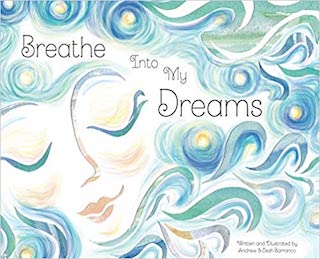 Breathe Into My Dreams
Breathe Into My Dreams
Andrew M. Barranco and Leah V. Barranco
Breathe Into My Dreams walks a restless reader through breathwork and imagery to get ready for sleep. The illustrations are whimsical brushstrokes that reflect the parts of the world described in the book. Short rhymes and pages of "Breathe in" and "Breathe out" calm the reader. This is a perfect bedtime story for families. (RR)
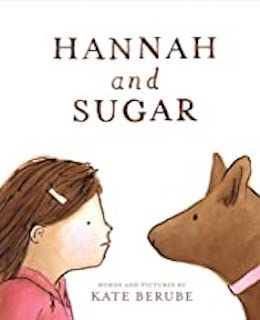 Hannah and Sugar
Hannah and Sugar
Kate Berube
Hannah and Sugar addresses overcoming a fear of dogs. Hannah does not want to pet the dog, Sugar, at the bus stop. When Sugar is lost Hannah has empathy for feeling sad and hungry. Hannah finds Sugar near her house. She finally pets sugar. This is a quick story that children will enjoy reading with someone or on their own. (LR)
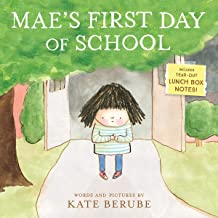 Mae's First Day of School
Mae's First Day of School
Kate Berube
It’s Mae’s first day of school and she’s declared that she’s not going. She’s thinking about all the things that could go wrong. When she and her mother get to school, she climbs a tree and is soon joined by another girl, Rosie, who also declares that she’s not going to school. She’s also thinking about all the things that could go wrong. Finally, Ms. Pearl, their teacher, joins them and declares she is also not going to school because of all the bad things that could happen. Mae sees that they’re all concerned about the same things and that they all like each other already. The three of them decide to go to school after all. While there are no strategies for dealing with anxiety, this book is funny and cute and a great read-aloud. (UR)
 I'm Worried
I'm Worried
Michael Ian Black
I’m Worried is a fun story about a potato and flamingo who worry too much. The girl tells them that bad things may happen but over time things turn out okay. Since we don’t know what is going to happen in the future they should just enjoy the now. Potato and flamingo are happier when they learn to be present and focus on what is happening now. This book is fun for kids and adults who like colorful illustrations and silly characters. (RUR)
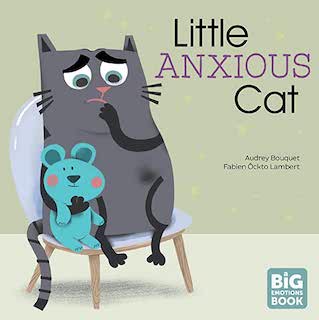 Little Anxious Cat
Little Anxious Cat
Audrey Bouquet and Fabien Ockto Lambert
Little Cat needs to visit the doctor for a check-up but he’s very anxious. Nothing Dad does can allay Little Cat’s fears. When Little Cat meets the doctor, the doctor can tell that Little Cat is anxious so he helps Little Cat through a few coping strategies including dancing, breath exercises, and thinking of his favorite character. Soon, Little Cat doesn’t feel so anxious anymore and he has a good check-up. Fun illustrations help the reader understand what Little Cat is experiencing and how he’s using coping strategies. This is a great book for an adult to read with a child so that they can practice Little Cat’s strategies as they read. (RLR)
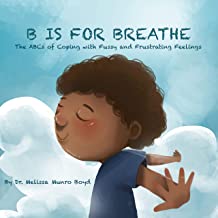 B is for Breathe: the ABC's of Coping with Fussy and Frustrating Feelings
B is for Breathe: the ABC's of Coping with Fussy and Frustrating Feelings
Melissa Boyd
B is for Breathing is an ABC book that teaches children different healthy ways to relieve stress and anxiety and how to deal with frustrating feelings. The illustrations are colorful, vibrant and reflect the strategy being presented on that particular page. I think that this book would be an excellent resource for teachers to use in their classrooms. It could couple with restorative circle time works nicely with the concious discipline stragtegies that many school use today. (RER)
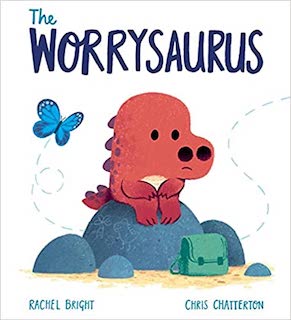 The Worrysaurus
The Worrysaurus
Rachel Bright and Chris Chatterton
Worrysaurus is all packed for his adventure! He has his bag ready and knows his plan, but as he begins his adventure, little thoughts of worry start creeping in to cloud up his happy day. In The Worrysaurus, readers are invited to join Worrysaurus on his adventure and work with him to use his comfort items to overcome the worry he begins to feel when things might not go the way he planned. This story is great for older preschool students to discuss how to overcome times when things don’t go as originally planned, as well as how to create comfort items to prepare for new experiences that can be a little more challenging. (RULR)
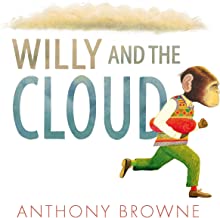 Willy and The Cloud
Willy and The Cloud
Anthony Browne
Willy is on his way to the park when suddenly he feels a cloud over his head. The cloud won’t go away and makes Willy feel chilled, sad, and angry. Finally, Willy has enough and screams at the cloud to go away, at which point it dissipates into rain and Willy visits the park again, only to dance in the sunshine this time. The illustrations do a fantastic job of helping to convey each of the moods that Willie experiences. (RLR)
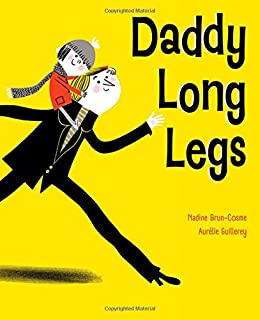 Daddy Long Legs
Daddy Long Legs
Nadine Brun-Cosme and Aurélie Guillerey
Daddy Long Legs is about a boy, Matthew, whose father drops him off at kindergarten. Matthew worries the car won’t start when it’s time for pick-up. His dad reassures him he will get to school another way. Matthew keeps worrying that something will go wrong and dad won’t be able to pick him up. Daddy comes up with fantastical ways to transport Matthew, such as on a dragon or getting rabbits to dig to school. Eventually Daddy tells Matthew if all else fails he will run on his two long legs to take him home. This story does not address any of the RULER skills. The reader is left to infer the emotion worry and the solution is Daddy will fix it. (Does not reflect RULER)
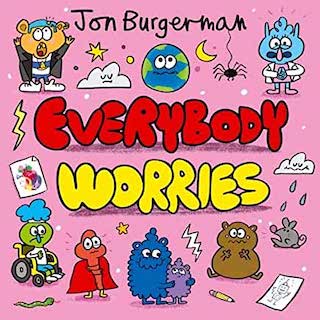 Everybody Worries
Everybody Worries
Jon Burgerman
Through bright, cartoonish illustrations this book describes how everyone can feel anxiety, how anxieties differ for people, what being anxious may feel like, and coping mechanisms for dealing with anxiety. Ways of coping that the author discusses are breathing, exercise, eating well, getting enough sleep, and drawing one’s worries. This is a fun means to introduce children to anxiety. The colorful and fun images make this a great candidate for a read-aloud. (LR)
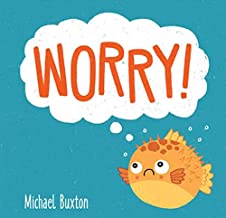 Worry!
Worry!
Michael Buxton
Peter the pufferfish worries about a lot of things, like going to the dentist, dreams, and being in the dark, but Peter’s friends help him see that there are good aspects about those things as well. The overarching theme of this cute and colorful book is that friends can help aleve worries. Although not effective in terms of discussing how to deal with anxiety, it’s a nice read for younger children. (Does not reflect RULER)
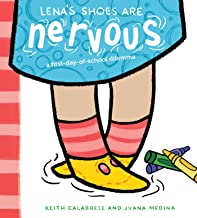 Lena's Shoes Are Nervous: A First-Day-of-School Dilemma
Lena's Shoes Are Nervous: A First-Day-of-School Dilemma
Keith Calabrese and Juana Medina
Lena’s Shoes Are Nervous is a cute way to demonstrate how one person can experience multiple emotions. The shoes are nervous and Lena is willing to address that. They have a conversation with Lena’s headband where they are reminded of other times they felt nervous and things turned out okay. In the end, the shoes decided to be brave and go to school. This is a great way to address not only first day of school nerves but before any event. Great for families, teachers, and independent reading. (RUR)
 Calm With the Very Hungry Caterpillar
Calm With the Very Hungry Caterpillar
Eric Carle
The Very Hungry Caterpillar is back again! This time, this little caterpillar is helping readers understand their big feelings. Through an array of bright and colorful illustrations, The Very Hungry Caterpillar describes big feelings that little readers may have and gives simple techniques, like counting to ten to help calm down when they have those big feelings. This book provides readers with engaging illustrations to help identify feelings and provides opportunities to practice the various coping techniques. This book would be a wonderful opportunity to enjoy with children from ages 3 to 5. It allows readers a chance to discuss the big feelings described in the story and how those feelings may look in the young reader’s daily life. So if you have a monkey mind or are feeling jumpy, take a breath and read Calm with The Very Hungry Caterpillar. (RLR)
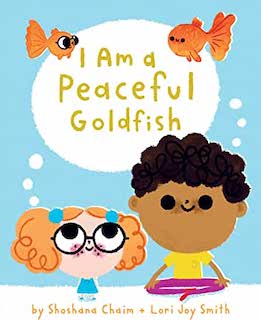 I Am a Peaceful Goldfish
I Am a Peaceful Goldfish
Shoshana Chaim and Lori Joy Smith
Have you ever been upset and can't calm down? With the help of peaceful goldfish and other animals, readers will learn how to breathe deep and calm their big emotions back down. In I Am a Peaceful Goldfish, the two young characters are so frustrated that they don't know what to do until they begin practicing their deep breathing to calm down. This story would be best used with children ages 3-5 to discuss different animals or items that can be used to focus on their deep breathing. I Am a Peaceful Goldfish would be great to teach young children how to deep breathe and also for them to brainstorm their own animals and objects to use to practice deep breathing techniques. (RR)
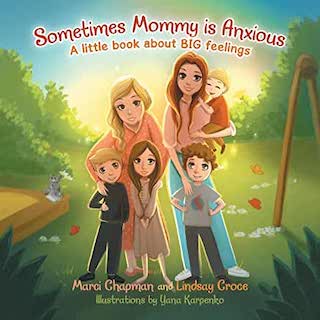 Sometimes Mommy Is Anxious: A Little Book About Big Feelings
Sometimes Mommy Is Anxious: A Little Book About Big Feelings
Marci Chapman, Lindsay Croce, Yana Karpenko
This book shows various pairings of mothers and children in which the mother is upset and then responds positively to her child/ren. Mommies are seen to be upset because they’re crying, angry, or tired for example. The authors’ consistent message to the young reader is “It’s OK, Mommy will always love you.” This book may help a child feel more confident in their mother’s love for them but no coping strategies are suggested. (Recognizing)
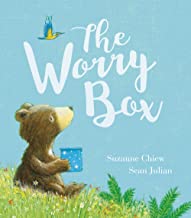 The Worry Box
The Worry Box
Suzanne Chiew and Sean Julian
Murray loves going on adventures, but going to the waterfall has him worried. To help him not be so worried, Murray’s sister Molly shares with him her worry box. She explains how she uses the worry box to keep her worries away so she can have fun. After making his own worry box, Murray is ready for new adventures. At the waterfall, Murray has the chance to use his worry box and helps a new friend put her worry away using his special worry box. The Worry Box would be a great read aloud for preschool readers and leads to great conversations about not letting worry take over so that new and fun things can happen. This story also lends itself to a craft by having young readers create their own worry box and practicing how to write or draw their worries to put in their box. (RULR)
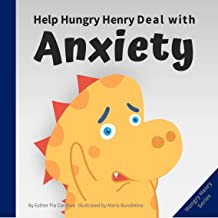 Help Hungry Henry Deal with Anxiety: An Interactive Picture Book About Calming Your Worries
Help Hungry Henry Deal with Anxiety: An Interactive Picture Book About Calming Your Worries
Esther Pia Cordova and Maria Burobkina
This is the story of a little dragon who has to learn how to breathe fire. Unfortunately, he has a lot of trouble producting fire and becomes upset and anxious about not being able to do ANYTHING right. The book has an omniscient narrator who helps coach Howie on how to calm down and encourages the reader to interact with Howie (patting him on the back, etc.) The narrator teaches Howie that anxiety can be helpful and that he can learn to manage those anxious feeling through different grounding techniques. The book does a good job of explaining how emotions and thoughts affect one another (cyclical thinking) but I think it may be a bit wordy for many young readers. The pictures and storyline, however are age-appropriate and appealing. (RULER)
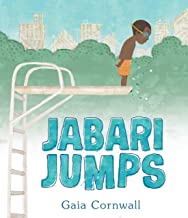 Jabari Jumps
Jabari Jumps
Gaia Cornwall
Jabari can't wait to show off what he learned during his swim lessons and is all set to jump off the diving board to celebrate. As the diving board ladder comes into view, Jabari starts second guessing his choice to jump. After taking a break and having a nice long chat with his dad, Jabari understands that it is okay to be nervous when trying new things. With this new found knowledge, Jabari takes a leap and discovers he really does like jumping off the diving board. In Jabari Jumps, readers see a real example of how being nervous can hold someone back from what they are most excited to do. With the combination of detailed pictures and text, Jabari Jumps will be perfect for students to explore real life examples of being nervous and using conversations with adults and little breaks to overcome the nerves that hold them back from trying new things. (RR)
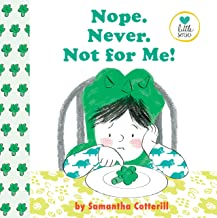 Nope. Never. Not for Me!
Nope. Never. Not for Me!
Samantha Cotterill
Nope. Never. Not For Me! is about a kid who refuses to try broccoli. The kid is dressed like a dinosaur so their mom refers to the broccoli as trees. They try broccoli but when they don’t like it they think they can’t be a dinosaur anymore. Mom says they are a brave “try” ceratops. She helps the kid try more foods. They are proud of themselves for trying lots of different things. This is a simple book that lets the illustrations lead the story. Good for families of picky eaters. (RU)
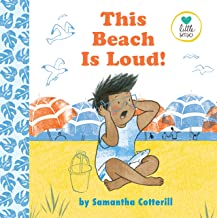 This Beach Is Loud!
This Beach Is Loud!
Samantha Cotterill
Beach trips can be very exciting! Building sandcastles and playing in the tide pools can be exciting new adventures, however, the beach can also be overwhelming. In This Beach is Loud! we see a young boy excited about a beach adventure, but during the excursion, he becomes overwhelmed by everything going on. Luckily Dad is there to help with some calming techniques and a fun fort to help get reset and ready to enjoy the day. This book is a part of a series that focuses on characters that are on the autism spectrum or have sensory issues. This book would be great for small discussions with younger children that may be anxious or overwhelmed when exploring or trying new things, even when it is things they are excited about. (RUER)
 Emily Brown and the Thing
Emily Brown and the Thing
Cressida Cowell and Neal Layton
Emily Brown and the Thing addresses being scared when it’s time to go to sleep. Emily is trying to sleep and a Thing keeps interrupting her because he’s scared. He needs his stuffy, milk, cough medicine, and to scratch his leg. Finally the Thing admits he’s scared of Things. Emily coaches him that he is a Nice Thing and he should think of Nice Things when going to sleep. The book spends most of the time on the adventures of getting the Thing what he needs. Only at the end is the emotion of being scared introduced and the advice of thinking about Nice Things given. This is a fun bedtime story for families but is not the best example of how to handle bedtime fears. (U)
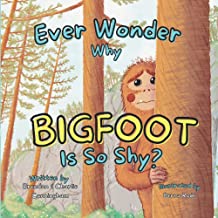 Ever Wonder Why Bigfoot Is So Shy?
Ever Wonder Why Bigfoot Is So Shy?
Brendan & Charlie Cunninghand and Berna Rode
Bigfoot is very shy but he really wants to make some friends because he’s lonely. He makes a list of things about him that he thinks will scare people away and not want to be his friend. In spite of his fear of rejection, Bigfoot takes a chance and introduces himself to some kids in the playground, who greet him warmly. They like the things about Bigfoot that he was afraid would scare them away. The authors, who are themselves children at the time of this writing, tell a sweetly illustrated story about how scary it is to take a chance and how it can pay off. (RULER)
Little Monkey Calms Down
Michael Dahl and Oriol Vidal
Little Monkey Calm Down is a preschool age book about a monkey who is extremely upset over an ice cream cone that fell to the ground. The narrator of the book tells monkey several different way that he can calm down (cuddling his blankie, taking deep breaths, sing a quiet song, etc.) After completing these exercises Monkey calms down and is ready to have a fun day. There isn't much of a storyline as this book is very short book, but htat makes it really nice for toddlers and earley preschool kids. The book does a good job of explicitly named feelings and could be a great starting point for toddlers expressing feelings through words instead of other less desirable means (tantrums). (Recognizing)
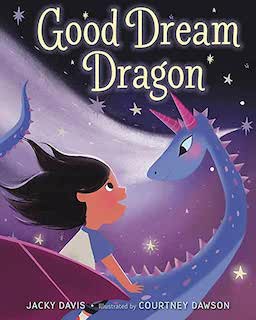 Good Dream Dragon
Good Dream Dragon
Jacky Davis and Courtney Dawson
It’s bedtime and the child is afraid to go to sleep because they may have bad dreams. The child’s mother reminds them that they can always call on the Good Dream Dragon for help, so that’s what the child does. The Good Dream Dragon flies the child to Dreamland where they have lots of fun adventures. When it’s time to go home and go to sleep, the child is still nervous about having bad dreams but the Good Dream Dragon reminds them how brave they were to fly on the Dragon’s back. With that, the child is appeased and goes to sleep. This is a gorgeously illustrated book with fun ideas for the sleepless child but offers no real coping mechanisms for fears of bad dreams. (L)
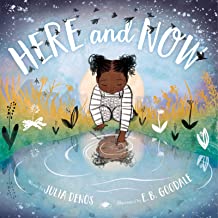 Here and Now
Here and Now
Julia Denos and E.B. Goodale
Here and Now is a grounding, meditation book. It focuses on all of the things that are happening in the world right now as the book is read. There is not a plot or characters. The illustrations are colorful and show a variety of people across the world. This book will be enjoyed by adults reading to children. It would be good to read before bed or when trying to calm a rowdy class of students. (Recognizing)
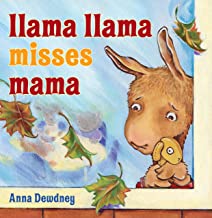 Llama Llama Misses Mama
Llama Llama Misses Mama
Anna Dewdney
Llama Llama is going to school for the first time and everything seems to be fine until Mama Llama leaves him there. He feels worried and alone and doesn’t want to play with anyone. It becomes too much at lunchtime and Llama Llama begins to cry. His teacher assures him that it’s OK to miss Mama but that she’ll be back at the end of the day. Llama’s new friends encourage him to play and before he knows it, they’re all having a great time. Llama finds out at the end of the day that he loves Mama and school. This rhyming story is a nice read aloud to introduce little ones to how they might feel at school. (RUL)
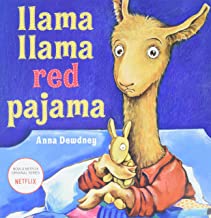 Llama Llama Red Pajama
Llama Llama Red Pajama
Anna Dewdney
In Llama Llama Red Pajama, Baby Llama’s mama tucked him in bed. He started to feel alone and called out for his mama. She told him she’d be there soon. While waiting for his mama, Baby Llama started to fret and became increasingly upset. He stomped and yelled for her to run quickly. Mama ran in and told him to be more patient. The rhymes in this story get stuck in the reader’s head. This book is a fun favorite that calls attention to increasing distress while away from parents. The solution is to be patient without further strategies. A great bedtime read. (RU)
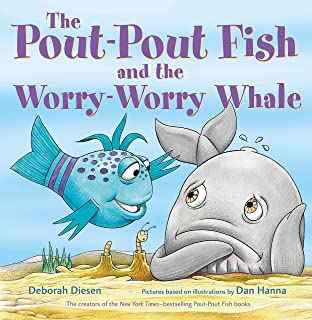 The Pout-Pout Fish and the Worry-Worry Whale
The Pout-Pout Fish and the Worry-Worry Whale
Deborah Diesen and Dan Hanna
On his way to a birthday party, Mr. Fish runs into Willa Whale who seemed unhappy. After talking a bit, Mr. Fish learns that Willa is experiencing anxiety about going to the birthday party. Mr. Fish suggests to Willa that they both take a deep breath and make a plan to pick one thing that she should try to do. Willa agrees and although “what-if” keeps popping up in her mind throughout the party, she remembers to breathe and try one small action that will help her enjoy the party. This is a great rhyming story that can help children learn to deal with their anxiety. (RULER)
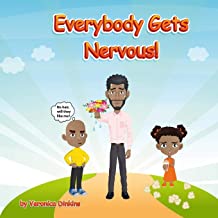 Everybody Gets Nervous
Everybody Gets Nervous
Veronica Dinkins
This short, rhyming book describes who gets nervous (everybody) and what they might get nervous about. While there is no real discussion of what to do when one gets nervous, the bright illustrations help normalize nervousness. (Does not reflect RULER)
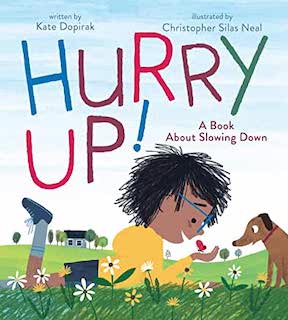 Hurry Up
Hurry Up
Kate Dopirak and Christopher Silas Neal
We are always busy and hurrying around. We rush from place to place only to have to go someplace else. In Hurry Up!, readers are reminded of the importance of slowing down, down, down. Characters throughout the story show ways to slow down and focus on the small things that are all around. This story would be best when used with preschool aged children, ages 3-5. This would be a great read aloud to use to discuss emotions that young readers may feel when they are hurrying around and a great way to start discussions on ways the young readers can slow down themselves. (RR)
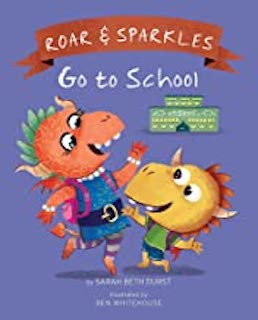 Roar and Sparkles Go to School
Roar and Sparkles Go to School
Sarah Beth Durst and Ben Whitehouse
Roar loves the summer! He loves playing at the beach and making new memories with his sister Sparkles. However, when fall begins creeping closer, Roar starts to worry about going to school for the first time. Will he have to fly over a flaming volcano or breathe fire by himself? The worry begins mounting until Sparkles helps Roar get to school on the first day and he meets his teacher and makes new friends! In Roar and Sparkles Go to School, Roar conquers his worry by talking to his sister and trying school for the first time! This book would be a great read to discuss real worries young readers have about starting a new school year, especially kindergarten students starting school for the first time. (RULE)
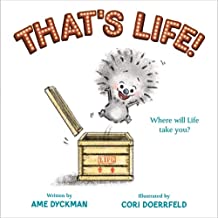 That's Life!
That's Life!
Ame Dyckman and Cori Doerrfeld
That's Life takes a unique approach to showing how fun life can be, especially when we learn that life is a journey, not a destination. Follow the young boy as life takes him on a whirlwind trip around the world to show him all that life has to offer. Life can be fun, but there can also be some crazy times. This story does a great job of teaching readers to focus on the journey called life. This book would be a great read aloud for children ages 4-6 and would be a great way to help readers remember how exciting life and the outside world can be, even with all kinds of big changes that they may be experiencing! (RUR)
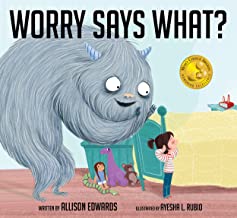 Worry Says What?
Worry Says What?
Allison Edwards and Ayesha L. Rubio
Worry Says What? is about a worry monster who lives in the back of the mind. He brings up things that make you not want to do activities. The main character finally confronts the worry monster because he is ruining her life. After that she is able to do activities. When the worry monster tries to come back, she tells him she can do hard things. This is a cute way to explain worries in the back of our minds that keep us from taking risks and doing hard things. The best solution is to face them head on and not let them take over. A fun book for independent readers, families, and teachers. (RULER)
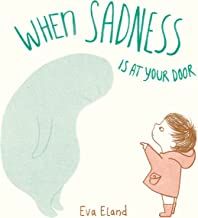 When Sadness Is At Your Door
When Sadness Is At Your Door
Eva Eland
When Sadness is at Your Door is a beautiful story about embracing sadness. The illustrations are simple but meaningful. They tell the story of sadness coming around and finding ways to be together. When you face sadness and accept it, it goes away. This is a gentle and quiet story that lets children know it’s okay to acknowledge and feel the intensity of sad feelings in order to heal. Perfect for grieving families. (RULR)
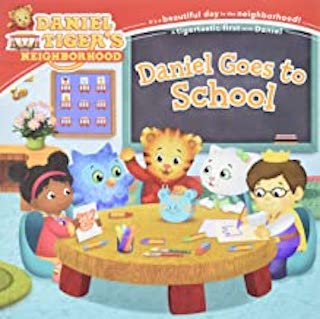 Daniel Goes to School
Daniel Goes to School
Becky Friedman and Jason Fruchter
Daniel Goes to School is a sweet story about when Daniel Tiger goes to school but doesn’t want his dad to leave. Daniel’s dad tells him, “Grown-ups come back.” Daniel draws a picture of his dad to make him feel better. Miss Elaina loses her necklace with the photo of her mom in it. Daniel reassures her that even without the necklace her mom will come back. They find the necklace and all the parents come back. The story is a little clunky. It doesn’t label abandonment or how to cope with it, but reassures children that grown-ups come back. Great for fans of Daniel Tiger TV show. (Recognizing)
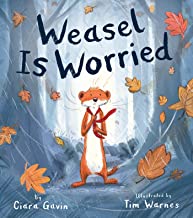 Weasel Is Worried
Weasel Is Worried
Ciara Gavin and Tim Warnes
One day, while collecting leaves, Weasel is suddenly caught in a storm. To protect himself from the storm, Weasel builds a fort to live in and becomes very comfortable living there by himself. Then one day, he finds Mole sitting on his couch. Weasel tells Mole that his fort is only for him to live in, but Mole doesn’t understand why. Weasel tells Mole about all the ways the storm scares him. Mole tells Weasel about how he thinks storms can be fun. Ultimately, Mole and Weasel walk outside, hand-in-hand, facing Weasel’s fears together. The illustrations do a great job of conveying both characters’ personalities and perspectives. Great for a read-aloud. (RLR)
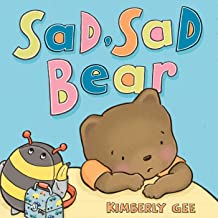 Sad, Sad, Bear
Sad, Sad, Bear
Kimberly Gee
Mama is going to work and it’s Bear’s first day at Cub Care. He is very sad that Mama has gone to work but soon he makes new friends and they play, have lunch, and take some quiet time. Bear has so much fun that he can’t wait to come back the next day. The colorful illustrations and simple story will appeal to many preschoolers who don’t know what to expect from daycare or preschool. (Does not reflect RULER)
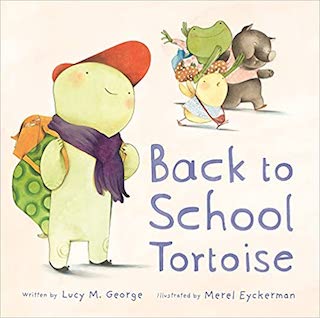 Back to School Tortoise
Back to School Tortoise
Lucy M. George and Merel Eyckerman
Tortoise is ready for school. He can’t wait to get his day started. He gets up and ready, but as he leaves for school, little worries creep in and he wonders if he should just stay home. In Back to School Tortoise, we discover what happens when Tortoise takes a deep breath and enters class with his head held high. This is a great story to use with younger children ages 4-6 as they start a new year of school or daycare. Tortoise shows that it is okay to wonder, but in the end, taking a deep breath and taking the first step into a new experience can lead to new friends and adventures. (RUR)
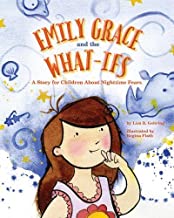 Emily Grace and the What-Ifs: A Story For Children About Nighttime Fears
Emily Grace and the What-Ifs: A Story For Children About Nighttime Fears
Lisa B. Gehring and Regina Flath
Emily Grace and the What Ifs is a story about a little girl who's night time fears begin the moment she jumps into bed. She worries about rhinos charging, lizards licking her face and her eyebrows falling off. Emily suddenly notices random items in her room and is easily distracted from her fears. She focuses on positives and is able to go to sleep. I don't think I would recommend this book as a first line defense against night time anxiety. Emily overcomes her fears extremely easily, and in real life, I just don't see it being that simple. The worries that she talks about are fantastical and kids who are anxious for real reasons may not relate. The most helpful information is relayed at the back of the books for caregivers and parents. It gives insight into acceptance and commitment therapy, relaxation techniques and sleep training. (RR)
Mindful Monsters: Roar Your Worries Away
Rebecca Gerlings
Mindful Monsters, Thinky, Sparky, Giggles and Snug are all hanging out playing monster games and taking turns choosing their activities. Snug, however, feels left out and overwhelmed by the rambunctious and LOUD games the other monsters have selected. When Snug starts feeling too anxious, she take a deep breath, and catches her worry is a bubble and blows it away with a roar. This helps her body feel calm and keeps her grounded. when the other monsters notice that Snugly is quietly laying in the grass they join her and ask what is going on and when she is worried about. She explains that she's overwhelmed by the noise and the other monsters join her in a calm activity of watching the clouds. This book is a useful tool for small children. The illustrations are bright and colorful and the monsters are interesting to look at. (RLER)
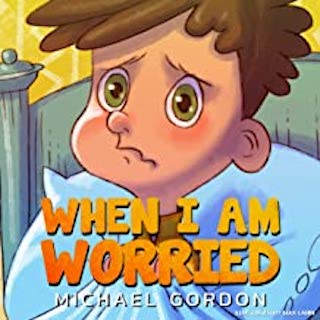 When I Am Worried
When I Am Worried
Michael Gordon
Josh woke up ready to face the day, but as the day progressed, Josh's worries started adding up and got hard for him to carry. From going to the doctor for shots to the dog next door barking at him through the fence. Josh finally talks with his family and they helped him understand that having worries are normal and that working to understand new things or why things happen will help Josh not feel so burdened by his worries. In When I Am Worried, follow Josh's story as he discovers how to shed off his bag of worries and learns that his family is always there to help him practice conquering his worries. This text is great for younger readers as they seek to understand why things make them worried and how the worries make them feel on the inside. This text has coloring pages at the end that can help readers visualize what makes Josh worried, but also how they may feel worried in their lives. (RUL)
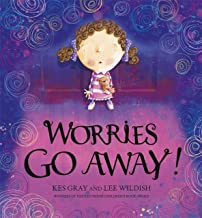 Worries Go Away
Worries Go Away
Kes Gray
Worries Go Away is about a girl who likes to go inside her own imagination when she worries. At first it’s fun but then the worries creep in. She learned she has to open her heart to her family and friends to ease her worries. This colorful, rhyming story helps explain to young children the importance of sharing worries with their friends and family. This book is good for families and counselors of children ages 3-6. (RR)
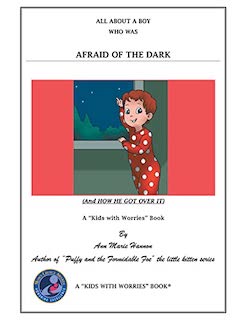 All About a Boy Who Was Afraid of the Dark (And How He Got Over It)
All About a Boy Who Was Afraid of the Dark (And How He Got Over It)
Ann Marie Hannon
All About a Boy Who Was Afraid of the Dark explorers the night Patrick woke up afraid of the dark. Patrick was all set to turn two until one night at 12am, on the 12th day, of the 12th month, until he became afraid of the dark. After thinking back on all the other times he had been worried and how to feel better, Patrick knew what he needed to feel better about being in the dark. Patrick called for his big sister and with her there, he realized he was no longer afraid of the dark. This story takes a look at how worry can pop up anytime in a person’s life, but with the help of your family, you can feel safe and worry-free. This story would be great for helping young readers who have become afraid of the dark. It also looks at other times where worry can sometimes show up and how family can help readers feel safe.
(RE)
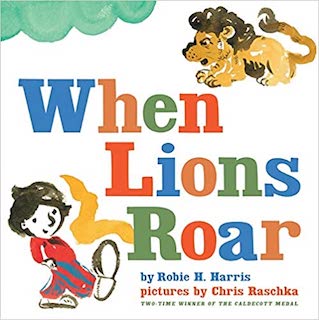 When Lions Roar
When Lions Roar
Robie H. Harris and Chris Raschka
Loud noises like dogs barking, sirens blaring, and thunder booming frighten the main character. When he gets scared, he sits down, shuts his eyes, and tells the “scary” to go away! When the quite is back, the boy notices things he didn’t before, like the beautiful weather and kids playing. Raschka’s illustrations enhance the story by allowing the reader to “see” the noises that scare the boy. Adults might consider this as a good introduction to recognizing feelings and finding ways to deal with them. (RULR)
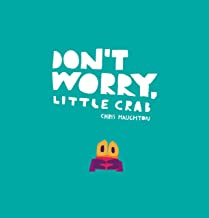 Don't Worry, Little Crab
Don't Worry, Little Crab
Chris Haughton
Little Crab and Very Big Crab are going to leave their tidepool home and visit the ocean. Little Crab is very excited until they get to the ocean and they see how big it is. LIttle Crab wants to go home but Very Big Crab encourages them to get in and when they do, they find a wonderfully-colorful ocean environment where Little Crab eats and plays until they no longer want to go back home. The author’s use of color is a treat. This is a sweet story about trying something even when you’re afraid. (Does not reflect RULER)
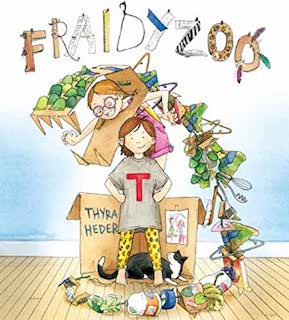 Fraidy Zoo
Fraidy Zoo
Thyra Heder
Have you ever been afraid and just didn't know why? Little T woke up and was not ready to go to the zoo because was afraid, but wasn't really sure why. With the help from her family, they worked through the alphabet to figure out what she was afraid of. When they got to Z, Little T realized she was excited and ready to go to the zoo. Fraidy Zoo is a whimsical tale that follows the silly way that Little T's family helped her overcome her fear of the zoo. This would be a great book to read with preschool aged children, ages 3-5, to discuss that it is okay to be afraid of unknown things and the fun way you can work to overcome those fears. The silly way the family helps Little T could be a great conversation starter for kids to discuss how they can work to overcome the fears that come their way. (RR)
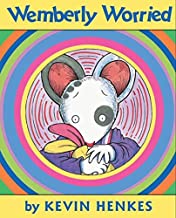 Wemberly Worried
Wemberly Worried
Kevin Henkes
Wemberly is worried...about EVERYTHING! Will the crack in the wall get bigger? Will my friends come to my birthday party? Wemberly's family always tried to calm her worry and talk through every new worry that Wemberly focused on. When it comes time for Wemberly to start school, her list of worries gets longer than ever before, until she meets Jewel. As they explore school together, Wemberly and Jewel learn how to enjoy the new experiences and not let their worries get in the way. In Wemberly Worried, readers get to visually see what young children worry about and how to interact with adults to understand and conquer their worry so they can enjoy new experiences. This book would be a great read aloud for young readers as they enter preschool or a new school year. It allows for open communication between young readers and adults to talk about worries and how to overcome them with the help of other friends and trusted adults. (RLR)
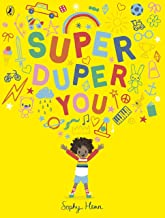 Super Duper You
Super Duper You
Sophy Henn
Everyone goes through changes! Sometimes you feel cuddly or sometimes you have rotten baddies. No matter how you feel, it is important to remember that you are the best and super duper you that there ever could be. In Super Duper You is a light and fun story about reminding readers to be the very best self they can be, even when they are feeling off or just having a rotten day. This would be a great read for preschool children ages 3-5 and could be easily adapted into a simple in class or at home project to focus on what children do best. (RLR)
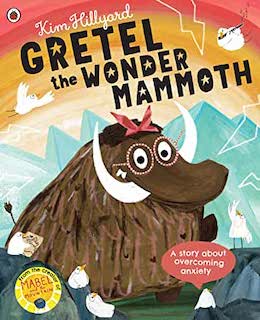 Gretel The Wonder Mammoth
Gretel The Wonder Mammoth
Kim Hillyard
One day, Gretel, the last mammoth on Earth, breaks free from the ice she has been frozen in. Her friends, the birds, dub her The Wonder Mammoth. Gretel’s new friends love her but she feels anxious about the new world she’s woken-up to but she tries to hide her feelings from her friends, even isolating herself so she doesn’t have to pretend to be OK. Eventually, Gretel’s friends find her and she confesses that she’s not OK. Gretel tells her friends how she feels and they try to help her feel less alone by talking with her and introducing her to new activities. Gretel soon finds her niche and feels like The Wonder Mammoth she is. Charming illustrations help tell this sweet story. A great read-aloud. (RULER)
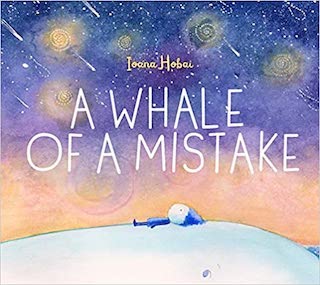 A Whale of a Mistake
A Whale of a Mistake
Ioana Hobai
The book, A Whale of a Mistake, is a vibrantly illustrated book that beautifully describes the feeling of worry a person, especially a child, might have after making a mistake. The main character makes a mistake, and all the characters around them point out the error adding to the overwhelming sense of worry created after the mistake. Resigned to a life of worry, the main character rides the worry (depicted as a whale) far out to sea. When they open their eyes, they find themselves staring at a sky filled with stars. The main character sees that some of the stars are falling and are not, in fact, perfect. The character realizes that if stars can continue to burn brightly despite their imperfection, the character can as well. The character makes the decision to move on and watches as the whale fades into the distance. The beautiful, watercolor illustrations featured in this book serve to vividly illustrate the empowering message of the story. (RULR)
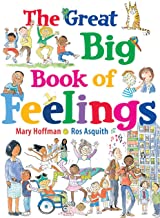 The Great Big Book of Feelings
The Great Big Book of Feelings
Mary Hoffman and Ros Asquith
The Great Big Book of Feelings describes different types of emotions. It gives examples of the causes of some emotions and depicts the ways people who are feeling that way may look. This book is great for introducing emotional vocabulary as well as facial expressions to discern how someone is feeling. A great book for families and counselors of children ages 3-6. (RULER)
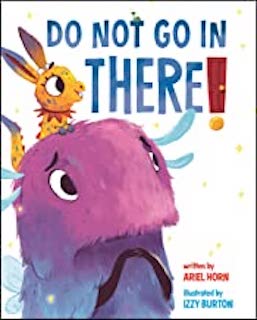 Do Not Go In There
Do Not Go In There
Ariel Horn and Izzy Burton
Do Not Go in There is a brightly illustrated book about imagination. Bogart and Morton are deciding if they should go through a mysterious door. Bogart thinks of only scary things behind the door and Morton only thinks of fun things behind the door. Finally, Bogart thinks of a fun possibility behind the door. The reader is left to decide if they would go through the door. This book lightly addresses positive vs negative thinking but lacks any strategies or coping mechanisms. (Does not reflect RULER)
 What if Pig?
What if Pig?
Linzie Hunter
Everyone loves Pig and thinks he’s a great friend. One day, Pig decides to have a party for his friends. After he plans the party and sends out invitations, Pig’s anxiety gets the better of him. What if nobody comes to the party? What if everyone comes? What if they get stuck in a massive blizzard? Pig decides to tell everyone he’s sick and cancels the party. Mouse takes Pig’s party plans and he, along with their other friends, put the party on anyway and get Pig to join in. Mouse suggests they each talk about what worries them and Pig discovers that everyone has something they worry about. While there is no portrayal of how Pig might deal with his anxiety in the future, the adorable illustrations let the reader understand that they are not alone. (RUL)
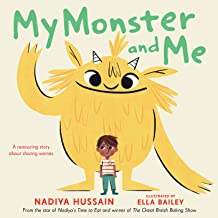 My Monster and Me
My Monster and Me
Nadiya Hussain and Ella Bailey
Our main character is a little boy who has a monster. He’s not sure when his monster showed up - he’s just always been there. The boy’s monster is big and starts to get bossy. He prevents the boy from doing things like playing with his friends. One day the monster becomes gigantic and is in a bad mood. The boy tells his Gran all about his monster and how it won’t leave him alone. While he is talking, he notices that his monster is getting smaller and smaller until the boy finally realizes he can tell his monster to go away for a while. With his monster managed, the boy enjoys his friends. The author makes a very important point of concluding the story with the detail that the monster always lives inside the boy’s pocket. Sometimes it may come out but the boy puts it back in his pocket. The fun illustrations make monster cute rather than scary. This is a great book for read-alouds or one-to-one conversations about the importance of talking through one’s anxiety. (RULER)
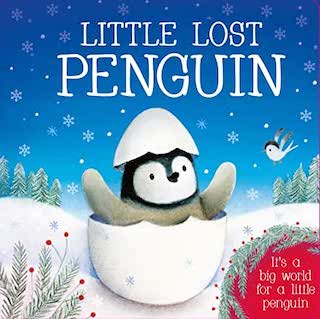 Lost Little Penguin
Lost Little Penguin
Igloo Books
Plip loved playing with his Sockybug. They went everywhere together. As Plip continued playing with Percy and Posy, Sockybug got left behind and Plip was worried he would never find his Sockybug. As he searched for Sockybug, he encountered Wal-the-Wump and together they built a new relationship, found Sockybug, and Plip helped his new friend make his own Sockybug to cuddle when he gets lonely. Lost Little Penguin is an endearing story that shows Plip's journey as he searches for his Sockybug and how he conquers his fear of Wal-the-Wump as he searches for his favorite toy. This story would be best shared with preschool aged children, ages 4-6, and would be a great way to discuss the worries young readers may have if they lost their favorite toy and how to conquer that fear. (RU)
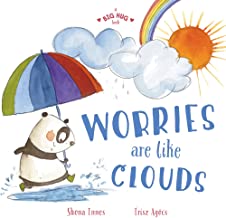 Worries Are Like Clouds
Worries Are Like Clouds
Shona Innes and Irisz Agocs
This book introduces the idea that, along with our good days when we’re happy and things are going well, we sometimes have days in which we’re worried. The author describes how one might feel when they're worried, and generally why they might be worried. Innes also describes ways in which one might deal with their worry through talking with loved ones, drawing, writing, breathing exercises, and more. Rather than being a story about a character, this book is more of an introduction to anxiety, what it feels like, and how we might deal with it. Great illustrations help convey the author’s intentions. (RLER)
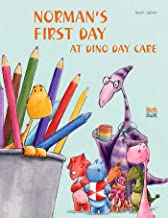 Norman’s First Day At Dino Day Care
Norman’s First Day At Dino Day Care
Sean Julian
Norman is a very small dinosaur who is very good at hiding. Norman is also very shy and so on his first day of daycare, Norman hides a lot, even though he wants to play with his new friends. Norman tells his teacher, Miss Beak, about his fears and she encourages him to try something new in class as she assigns him to work with a partner. Norman and his partner have a great time working together and Norman discovers he can be brave. The illustrations do a nice job of enhancing the story and showing why tiny Norman might be shy. (RELR)
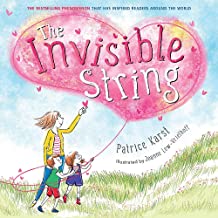 The Invisible String
The Invisible String
Patrice Karst
Twins Liza and Jeremy wake up one night during a rainstorm, which scares them, so they run to find their mother and tell her they want to be near her. She explains that they’re always connected by the invisible string that connects their hearts. No matter how far away they are from the people they love, there is an invisible string that always connects them. The twins go to sleep after, dreaming of all the people they love and are connected to. This is a sweet story about the security that feeling loved can bring. (L)
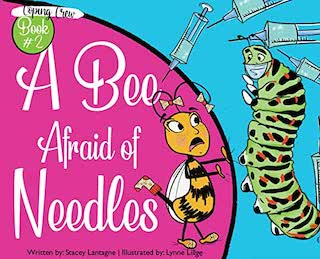 A Bee Afraid of Needles
A Bee Afraid of Needles
Stacy Lantagne and Lynne Lillge
Betsy the Bee loves to fly around and be free but one day, Betsy feels ill and visits the doctor who tells her that she has an infection and needs a shot. Betsy knows how human kids feel about her stinger so she flies away from the doctor’s office, only to return later when she feels even more ill. She agrees to get the injection, all the while focusing on the fun things she can do again when she’s well. In the end, Betsy doesn’t even feel the shot and becomes healthy again. Part of the “Coping Crew” series, this book is full of vibrant illustrations that help support and enhance the narrative but can feel a bit overwhelming at times. That said, the illustrations may help make this a good read aloud. (RLR)
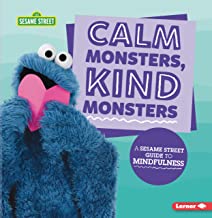 Calm Monsters, Kind Monsters: A Sesame Street Guide to Mindfulness
Calm Monsters, Kind Monsters: A Sesame Street Guide to Mindfulness
Karen Latchana Kenney
Calm Monster, Kind Monster is a Sesame Street book full of mindfulness strategies. Each monster deals with a different scenario and teaches a coping strategy to help calm down and regroup. Some of the emotions presented are feeling sad, embarassed, restless, frustrated, lonely and worried. I think is a greta book to introduced emotions and feelings to preschoolers. it is age appropriate and empowers readers to recognize and manage emotions.The book is full of photographs of the various mindfulness exercises AND has the beloved Sesame Street monsters on each page. There is also a plug for parents and guardians to download the free Breathe, Think app that echos what the book is teaching. (RLR)
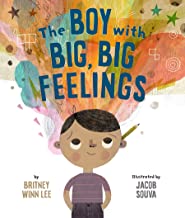 The Boy with Big, Big Feelings
The Boy with Big, Big Feelings
Britney Winn Lee and Jacob Souva
Big emotions can happen anytime. Sometimes we can prepare for them and other times they can take over without notice. In The Boy with Big, Big Feelings, our young boy starts to realize that sometimes his big emotions make him overwhelmed. After finding another friend with big emotions, the pair work to help others around them embrace their emotions and help them understand that even though some things their emotions seem too big to handle they have each other to help get through. This book would be a great way to start conversations with preschoolers about their big emotions and to start a dialogue about ways to help when they feel the big emotions are taking over. (RUER)
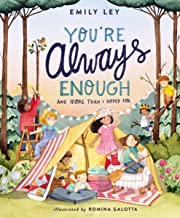 You’re Always Enough and More Than I Hoped For
You’re Always Enough and More Than I Hoped For
Emily Ley and Romina Galotta
This book is written from the perspective of an adult and gives affirmations to a child about how they are loved. Through rhyming text, the adult describes different scenarios in which a child might not feel their best, but that the adult and God continue to love them. A diverse cast of characters represented by cute illustrations do well to support this as a book to read one-on-one with a child. (Does not reflect RULER)
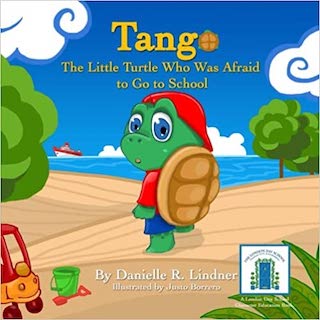 Tango, The Little Turtle Who Was Afraid To Go To School
Tango, The Little Turtle Who Was Afraid To Go To School
Danielle R. Lindner and Justo Borrero
Tango loved spending time with his mom, until one day she told him he has to go to school for the first time. In Tango: The Little Turtle Who was Afraid to go to School, Tango prepares to go to school for the first time. As exciting as the time is, Tango is nervous, but with the help of Mom, he becomes more confident in being able to try new things with new friends. This book is great for younger readers, ages 3 to 5, who are preparing for preschool or kindergarten and opens up conversation pathways for children and families to discuss anxiety revolving around school. (RUR)
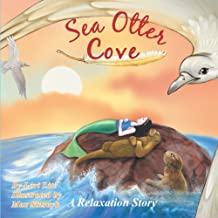 Sea Otter Cove
Sea Otter Cove
Lori Lite
Sea Otter Cove explores the story of how a young sea girl takes time to sun on the large rock in the cove and practices her deep breathing exercises. When a little sea otter notices the sea girl, he explores the rock and practices deep, relaxing breaths, just like the young sea girl. This story was not as engaging as a typical picture book, but did a great job demonstrating deep breathing exercises to relax and refocus. This text would be best to use with preschool children to help teach them deep breathing techniques and how to use them to help refocus and regulate their emotions. (RR)
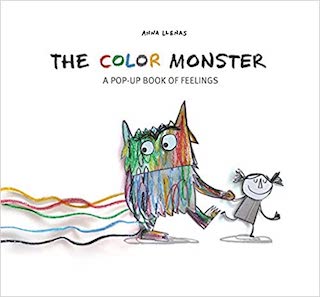
The Color Monster: A Pop-Up Book of Feelings
Anna Llenas
In this gentle introduction to identifying emotions, poor Color Monster’s feelings are all jumbled up. Luckily, a friend stands by to help sort them out by dividing them up into jars. The friend helps Color Monster single out happiness, anger, sadness, fear, and calm, describing each feeling and pairing it with a color. Happiness, for example, is a feeling “yellow like the sun,” that makes you “laugh, jump, dance and play,” and that “you want to share . . . with everyone.” The dramatic pop-up illustrations, saturated in the colors attached to each feeling, highlight Color Monster’s expression and body language, helping to convey the essence of each emotion. Importantly, feelings aren’t judged or ranked here, simply recognized and named. Just when Color Monster and their friend have identified them all, another feeling pops up for readers to guess, signified by the color pink, hearts, flowers, and a look of adoration spreading across Color Monster’s face. Toddlers and preschoolers will love this one, which is well-suited to both story time and one-on-one sharing. (RLR)
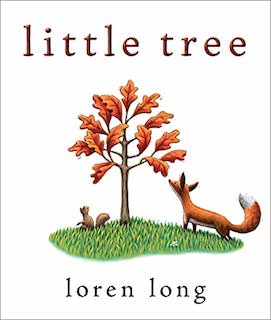 Little Tree
Little Tree
Loren Long
Little Tree has great friends all around him, but when it is time to drop his leaves for the first time, he is too worried and decides to hold on to them. As time goes by, his friends grow big and tall, but he stays the same size. His forest friends explain that he has to drop his leaves like his other tree friends. Little Tree decides to let go of his worry and leaves and is able to see how much he grows. Little Tree is a tender story about how worry can cause people to miss out and not be the best they can be. This story would be best when used with preschool aged children, ages 3-5, and used to build discussions and connections about how worry can stop us from experiencing the best that life has to offer. (R - Recognizing Emotions)
 What Should I Do When I Feel Worried?
What Should I Do When I Feel Worried?
Charlie Lumiere and Hilman Makhluf
Turtle is feeling anxious and they don’t know how to feel better. They ask a lot of questions such as, “should I hold my breath until I get dizzy? Should I bite all my nails?” Penguin comes along and lets Turtle know that everyone feels anxious from time-to-time and that it’s OK to talk about it but knowing how to make yourself feel better is key. Penguin shows Turtle a method they use, which Penguin calls their Worry Rock, in which Penguin writes their worries all over the rock when they’re feeling anxious and then Penguin washes the words off the rock, thereby washing the worries away and enabling Penguin to let their worries go. The author provides a tip for this strategy and a link to additional resources. The visuals are bright and fun making this a great book to use with a child who an adult knows needs an outlet for their anxiety. (LR)
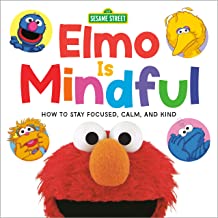 Elmo Is Mindful: How to Stay Focused, Calm, and Kind
Elmo Is Mindful: How to Stay Focused, Calm, and Kind
Joe Mathieu
Elmo Is Mindful is another book which teaches toddlers and prescholers about managing emptions with mindfullness exercises. The book follows the beloved Sesame Street monsters through various scenarios and emotions and instructs kids how to recognize feelings and emotions through different facial expressions and body language. The great thing about this book is the feelings vocabulary that is used. This would be a great tool to teach toddlers and preschoolers the words that connect with their feelings rather than lashing out. The vrious mindfulness exercises are age-appropriate and very useful for those big feelings that come along with little kids. A great addition to any family or classroom. (RULER)
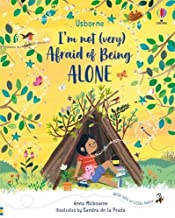 I’m Not (Very) Afraid of Being Alone
I’m Not (Very) Afraid of Being Alone
Anna Milbourne and Sandra de la Prada
During the day, while they’re at home, a child is scared to be alone, even though their Dad is close-by. The child is playing by themselves when they suddenly realize that Dad is in another room so they run to Dad to be with him. Dad begins to sing so that the child knows where he is and won’t be scared that Dad has gone away. The child comes to think of it as a thread that connects them and Dad. When the child bravely goes outside by themselves the next day, they begin to sing the way Dad did and they feel connected again. The thread that connects the child and Dad is partially illustrated by hearts and star cutouts on the pages of the book. Some scenes also feature cutouts to convey connections between rooms. Fun, colorful illustrations make this a great one-on-one read with a child. (RULR)
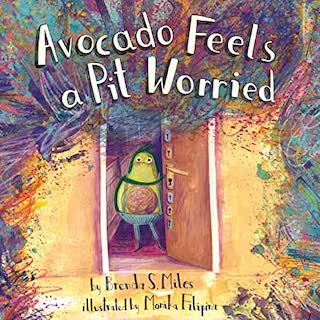 Avocado Feels a Pit Worried
Avocado Feels a Pit Worried
Brenda S. Miles and Monika Filipina
Avi the avocado is anxious about everything and one day he hears a loud sound outside. He asks himself a lot of “what if” questions but finally works up the courage to go outside and see what made the sound. The source is an avocado pit that Avi buries. After that, Avi is still scared and hides in his house which makes him start to feel lonely. Soon Avi hears another loud sound but this time, it comes from an avocado named Avril who grew from the tree that Avi planted. Avril wants to play with Avi and soon several additional avocados come around, wanting the same thing. Avi decides to try to play and ends up loving his new friends. Children will enjoy the alliterative avocados, all of whom have names that begin with “A” and the fun they have in this colorfully-illustrated book. The narrative wanders a bit but this could be a fun read-aloud. (RULR)
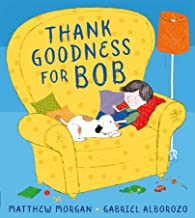 Thank Goodness For Bob
Thank Goodness For Bob
Matthew Morgan and Gabriel Alborozo
Max worries a lot, so much that sometimes it makes him feel dizzy and overwhelmed. He would love to talk to his parents about how he feels, but sometimes it feels like they are too busy. Max's dog, Bob, is the opposite. Bob takes life as it comes and doesn't worry. One day Max decided to tell Bob all about his feelings and as he does, they become bubbles floating around the room. Max feels so much better because he talked with Bob and decides to pop those worry bubbles anytime they float around. Thank Goodness for Bob is a charming tale that will help young readers learn about the importance of talking to others about their emotions. It took Max talking to his dog to realize how important it is to talk to friends and families about his worries. This would be a great story to use when sharing strategies for conquering worry. (RULR)
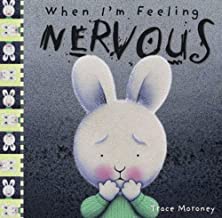 When I'm Feeling Nervous
When I'm Feeling Nervous
Trace Moroney
When I’m Feeling Nervous goes into detail about how a mind a body negatively reacts to nervousness. It also gives examples of why one may feel nervous and ways to combat nerves. This book is good for families and counselors of children ages 3-8. (RULR)
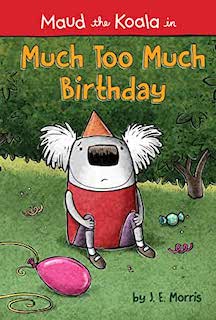 Much Too Much Birthday
Much Too Much Birthday
J.E. Morris
Maud was so very excited about her birthday party. She was so excited that she invited way more people than she realized to celebrate her special day. When Maud joined the party, she realized that although she was excited about having a lot of people over for her party, it was very overwhelming. With the help of her friend Simon, Maud was able to rejoin the party and celebrate. Part of the Maude the Koala series, Much Too Much Birthday would be a great read for preschool children, ages 4-6, to help them prepare for a birthday party that may be overwhelming. Reading this book before a potentially overwhelming social event and using the caretakers notes at the end of the story will give young readers the tools for finding a quiet place to regulate their emotions and prepare for the exciting event. (RUER)
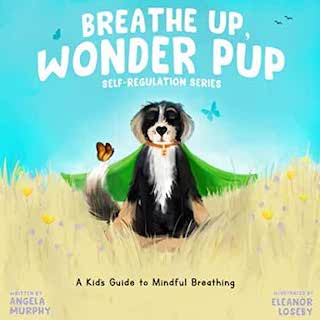 Breathe Up, Wonder Pup: A Kid’s Guide to Mindful Breathing
Breathe Up, Wonder Pup: A Kid’s Guide to Mindful Breathing
Angela Murphy and Eleanor Loseby
Draper and Zane are dogs that live together. Draper is a pretty relaxed dog but Zane is very hyper. Draper decides to help Zane learn how to breathe up to help calm Zane. Draper calls his technique Animal Breathing, which involves thinking of an animal, breathing up (in) for four seconds, holding it for three, and then breathing out again for four seconds. The illustrations detail how Zane learns to do this, with multiple examples. After a bit of practice Zane feels much better, like he’s a Wonder Pup. Part of the “Self-Regulation Series,” this is a great book to use when introducing mindful breathing. (RLR)
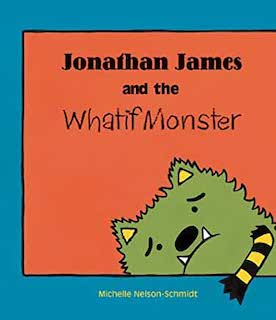 Jonathan James and the Whatif Monster
Jonathan James and the Whatif Monster
Michelle Nelson-Schmidt
Jonathan James has a whatif monster and it makes him worried and anxious sometimes. Jonathan details all of his worries that the whatif monster brought up until he finally decided to switch his mindset to overcome his worries. Jonathan James and the Whatif Monster details common anxieties and worries preschool aged students, ages 3-5, might face. This story would be great as a read aloud and conversation starter for identifying common worries the young readers may have and to visualize their own whatif monster, just like Jonathan James' in the story. (RLR)
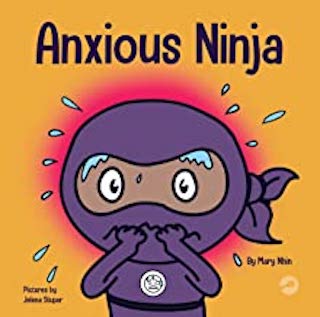 Anxious Ninja: A Children's Book About Managing Anxiety and Difficult Emotions
Anxious Ninja: A Children's Book About Managing Anxiety and Difficult Emotions
Mary Nhin
Anxious Ninja is a fast runner during practice, but when it comes time for the big race, Anxious Ninja doesn’t do his best! When he shares how he is afraid of not doing his best with Gritty Ninja, Gritty Ninja shares a mantra that helped him overcome his anxiety. Anxious Ninja and Gritty Ninja practice the 3 Rs method to get back to performing the best each ninja could do! When Anxious Ninja started the big competition, he had to rely on the 3 Rs to overcome his anxiety and win the race. Anxious Ninja is a great read aloud for young readers who worry about letting their families down. The 3 Rs method is a practical strategy that can be introduced and practiced to help alleviate stress that little minds sometimes carry.
(RUER)
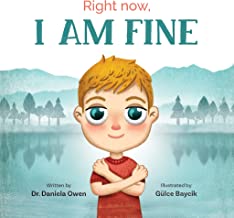 Right Now, I Am Fine
Right Now, I Am Fine
Dr. Daniela Owen and Gulce Baycik
Sometimes bad things happen around us and it can cause us to feel scared and worried. It can feel like knots in our tummy or like an elephant is sitting on our chests. When those emotions and feelings start taking over, it is important to say "I'm fine right now" and use one of the calming strategies described in the story. I'm Fine Right Now is a great text to help explain general worry and fear to younger children ages 4-6. The various strategies explained and demonstrated in the text are a great way to start practicing regulating exercises and helping young readers understand bad things can happen, but using the strategies can help them not feel so big. (RULER)
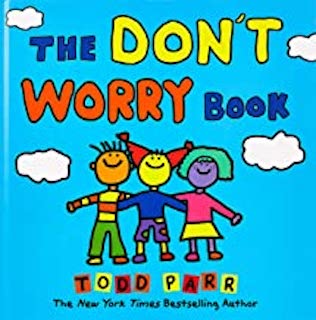 The Don't Worry Book
The Don't Worry Book
Todd Parr
Don't worry! That's easy to say, however, what happens when we start worrying too much? What happens when you have to meet someone new or go to the doctor because you are sick? All of those things can cause you to worry, however with some easy, and sometimes silly ways, you can conquer your worry. In The Don't Worry Book, readers learn what worry looks like and what it may feel like and different times worry may start to build. With some easy techniques, young readers can begin to overcome their worry and take charge of not worrying! This book is a great conversation starter to introduce young readers to what worry is and some real examples of times worry can start manifesting. This book also includes techniques for overcoming worry that can be practiced and used immediately. (RUR)
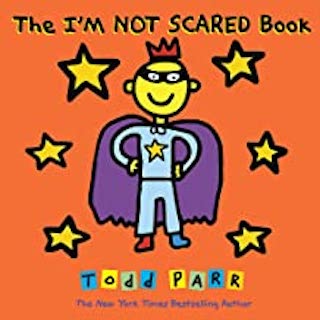 The I'm Not Scared Book
The I'm Not Scared Book
Todd Parr
Ahhh! What was that?!? Sometimes we get scared of the dark or the unknown shapes hiding under the bed, but what do we do when we are scared? In The I'm Not Scared Book, we learn about different times that people can be scared and how to break through that fear into understanding. So instead of being afraid of the stuff under the bed, clean it out and find all those toys you thought you lost! This book is a great way to have young readers begin talking boldly about the times they are scared and how they can work to discover the unfamiliar and unknown to not be scared anymore. (RUR)
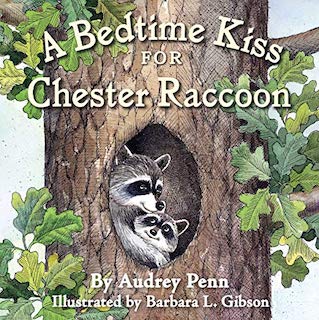 A Bedtime Kiss for Chester Racoon
A Bedtime Kiss for Chester Racoon
Audrey Penn and Barbara Gibson
A Bedtime Kiss for Chester Racoon is a sweet story of a young racoon settling down for a nap in the afternoon. As the sun moves across the opening of Chester’s den creating shadows all around him, Chester’s imagination runs wild with thoughts of creepy creatures lurking about. The well-illustrated “monsters” that exist in the shadows of Chester’s den are quickly and easily banished by a quick kiss and a few simple words from his mother. As not all fears, especially those of older kids, are not so easily vanquished, this book would be best suited for younger children (4 years-5 years). Used with younger kids, this book would be a brief introduction to an SEL unit focusing on recognizing fear as a feeling that all of us feel sometimes. (RU)
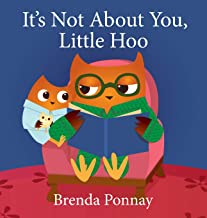 It's Not About You, Little Hoo
It's Not About You, Little Hoo
Brenda Ponnay
It's Not About You Little Hoo takes a baby owl, Hoo, through several scenarios where things don’t go his way. His friends all go home because it was time for dinner. The narrator briefly explains that it’s not Hoo’s fault his friends left. Initially feelings are not discussed but disappointment is shown on Hoo’s face. The last example does mention Hoo being sad. This book is simple and exemplifies situations that are unknown and out of our control. Adults who want to teach children that there are unknown factors driving other people’s behaviors. (RUR)
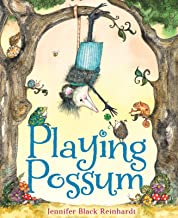 Playing Possum
Playing Possum
Jennifer Black Reinhardt
Playing Possum is about animals that use defense mechanisms when they are scared. It starts with Possum who freezes all the time in silly situations. He befriends an Armadillo. They learn to be patient with each other so they have a friend waiting when they calm down. Then they stop freezing so often. They befriend other animals such as a fainting goat, octopus, turtle, porcupine, and skunk. They all learn to be empathetic, patient, and forgiving with each other. This is a great book for people who are nervous and not nervous. Everyone can use these real-life examples to learn to be empathetic. Perfect for teachers (especially science teachers) and families. (RUR)
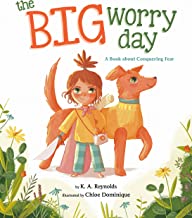 The Big Worry Day: A Book About Conquering Fear
The Big Worry Day: A Book About Conquering Fear
K.A. Reynolds and Chloe Dominique
Bea, the dog and her Best friend are planning to go outside and play today but they’re worried about all the bad things that could happen out there. Best friend knows how to make them feel better. They breathe, do yoga, imagine their favorite things, journal, and talk to others about their worries. Bea and Best friend think they’re ready to go outside and they have a blast. Clearly human, Best friend is the anxious one but she and Bea are adorably drawn and animal lovers will enjoy reading about these two main characters. Recommended for reading with a child or small group with whom to explore ideas like yoga, breathing, etc. (RULR)
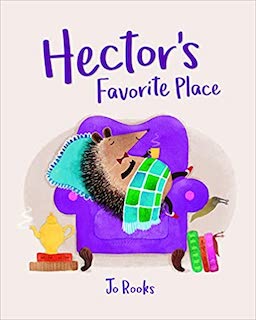 Hector's Favorite Place
Hector's Favorite Place
Jo Rooks
In Hector’s Favorite Place, we find Hector at home. Hector LOVES being at home. He has great friends that ALWAYS invite him on wintertime adventures, no matter how many times he declines to stay in the comfort of his home. After one new and exciting invitation, Hector decides to let his worry fall away and to try something new and daring. Although he is timid, Hector decides to not let the worry of what-ifs keep him from enjoying and making memories with his friends. Hector’s story is a great way to reinforce with children that having a comfortable and safe place is great to have, but that we can’t let that keep us from getting outside to try something new. Great for ages 4-6 with applicable discussion questions and tips from the author included, this book is a great addition to any collection. (RULR)
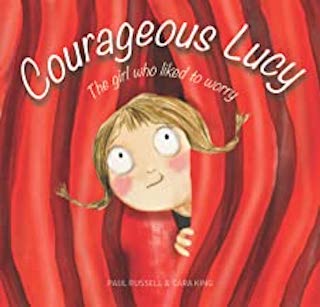 Courageous Lucy: The Girl Who Liked To Worry
Courageous Lucy: The Girl Who Liked To Worry
Paul Russell and Cara King
Courageous Lucy: The Girl Who Liked to Worry mildly addresses irrational worries. Lucy has a lot of irrational worries. The book is largely a list of Lucy’s worries leading up to her class preparing for the school musical. The teacher asks if Lucy can be courageous. Suggestions of how to be courageous or calm your worries are missing from the book. It is unclear where Lucy finds her courage to be the tree in the school musical. The book ends with Lucy still worrying but knows she can be courageous too. This book can be one in a collection of books about worries, but should not be the only one. (Recognizing)
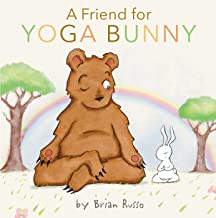 A Friend for Yoga Bunny
A Friend for Yoga Bunny
Brian Russo
In the midst of practicing yoga, Bunny meets Bear who is watching curiously. Bear tells Bunny that her birthday is tomorrow and that she’ll have a big party but she hates being the center of attention. Bunny encourages Bear to practice yoga with him to help make her feel better. Afterward, Bunny invites Bear to a group yoga class happening the next day. Bear doesn’t show up and Bunny is anxious that he might have offended Bear but Bunny talks about his anxiety, meditates, and does yoga. When he opens his eyes, Bear is there practicing yoga herself. She uses breathing techniques during her party to have a great time. An introduction to yoga is essential for the reader to understand the context. (RULR)
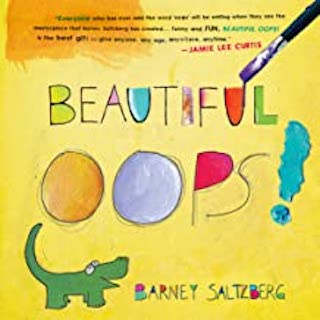 Beautiful Oops
Beautiful Oops
Barney Saltzburg
Oops! I spilled the juice! No need to fear when you look at a challenge, like spilled juice, to find something new. In Beautiful Oops, readers look at different situations where something is thought to be ruined. Instead of getting upset, readers can take a moment to see the accident as an opportunity to grow and make something completely new from a torn page or stain. This is a perfect resource to teach preschoolers about having a growth mindset and to remind them to always be looking for new opportunities to see something new. (RR)
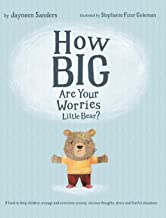 How Big Are Your Worries Little Bear?
How Big Are Your Worries Little Bear?
Jayneen Sanders and Stephanie Fizer Coleman
Little Bear worries a lot in How Big Are Your Worries Little Bear? His mother helps him by having him tell all his worries and then draw all his worries. Little Bear’s worries get smaller and he is ready to take a risk and do the things he’s worried about. By the end of the day Little Bear’s worries had disappeared. There is a lot of educational material at the back for adults who want to help children with generalized anxiety. This book is for adults who want to reach children with anxiety. (R- Regulating)
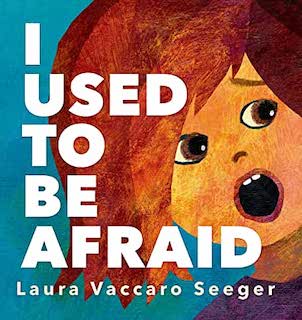 I Used to Be Afraid
I Used to Be Afraid
Laura Vaccaro Seeger
I Used to Be Afraid follows a young girl as she shares things that she used to be afraid of around her home and school. Throughout the story, we get to celebrate with her that she is no longer afraid of those things! This story also acknowledges that even though the fears she once had are now gone, that there are still things she is afraid of sometimes. This is a great connection for young readers in preschool, ages 3-5, to begin understanding that even though they may be afraid of things around home and school now, it can be celebrated when those fears are overcome! This book would be great to use as a read aloud with children in order to start conversations about real life things they are afraid of and together, children can begin discovering how to overcome their fears and celebrate overcoming those fears. (R-Recognizing Emotions)
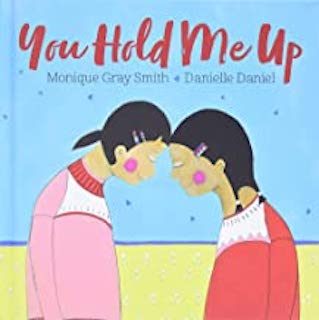 You Hold Me Up
You Hold Me Up
Monique Gray Smith and Danielle Daniel
You Hold Me Up is a story with vibrant illustrations that highlights indigenious families and how they support one another through reconciling their past (being persecuted, humiliated and forced to abandon their culture). The characters list ways to support one another through respect and caring actions. The author notes that this book serves to heal the hurt and build love and respect through open communication and empathy. I do not believe that this book should be categorized as dealing with anxiety. (Does not reflect RULER skills)
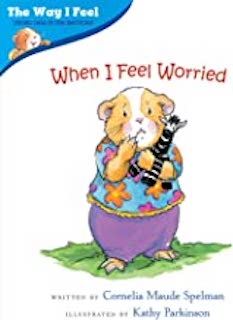 When I Feel Worried
When I Feel Worried
Cornelia Maude Spelman and Kathy Parkinson
When I Feel Worried takes a look at times when we can feel worried. Trying new things and going new places can be very exciting, but can also cause us to feel worried. In this story, we see experiences that can make us feel worried, but we also find some great ways to make sure we don’t continue to feel worried. This story is great for preschool students to discuss experiences that can cause worry, how it looks and feels to young readers, as well as how to find the perfect way to fight the worry away in order to make new memories. (RULER)
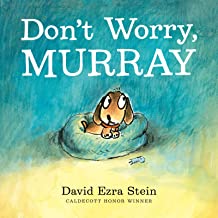 Don't Worry, Murray
Don't Worry, Murray
David Ezra Stein
Murray is a dog who worries about a lot of things. Visually, we see the things Murray is anxious about - storms, big dogs, popping balloons, scary nightmares. Despite these fears, Murray tries new things. Brave Murray is adorably illustrated such that the reader cares about him immediately. A great read-aloud. (RUR)
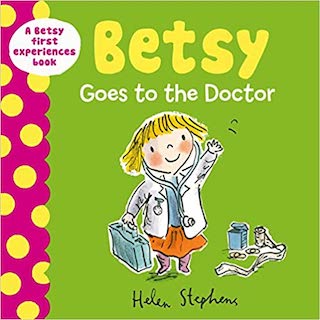 Betsy Goes To the Doctor
Betsy Goes To the Doctor
Helen Stephens
In Betsy Goes to the Doctor, Betsy feels rotten. After her mommy realizes Betsy needs to go to the doctor. Betsy's toy Penguin is nervous about going to the doctor...and maybe Betsy is a little nervous too. When Betsy finally meets the doctor, the doctor shows her how she plans to check her ear to see why it is sore and after the doctor showed how it worked on Penguin, Betsy was brave and no longer anxious. After some medicine and rest, Betsy was ready for new adventures. This story is a great way to start conversations about anxiety that many children feel when they have to go to the doctor. Starting the conversation before the event really helped Betsy and will help other young readers as well. (RU)
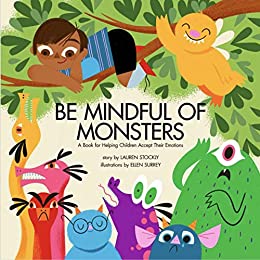 Be Mindful of Monsters: A Book For Helping Children Accept Their Emotions
Be Mindful of Monsters: A Book For Helping Children Accept Their Emotions
Lauren Stockly and Ellen Surrey
Thinky, Sparky, Giggles and Snug are all hanging out playing monster games and taking turns choosing their activities. Snug, however, feels left out and overwhelmed by the rambunctious and LOUD games the other monsters have selected. When Snug starts feeling too anxious, she take a deep breath, and catches her worry is a bubble and blows it away with a roar. This helps her body feel calm and keeps her grounded. when the other monsters notice that Snugly is quietly laying in the grass they join her and ask what is going on and when she is worried about. She explains that she's overwhelmed by the noise and the other monsters join her in a calm activity of watching the clouds. This book is a useful tool for small children. The illustrations are bright and colorful and the monsters are interesting to look at. The language is age-appropriate ad easy to understand. (RLER)
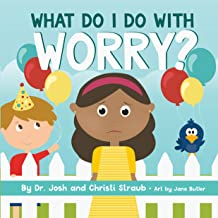 What Do I Do With Worry?
What Do I Do With Worry?
Dr. Josh Straub, Christi Straub, and Jane Butler
Willow just moved to a new house and all the worries she has been holding on to keep growing. All the what-if's that are leading to her worry keep growing after she is invited to the neighbor’s birthday party. When Willow feels like the worries will take over, Grandma shows up with her favorite cookies to talk through her worries. Grandma and Willow talk about worries being like birds and how Willow can work to let go of all of those what-if birds. The day of the party, Willow lets go of her worries and gets ready to meet her new neighborhood friends. What Do I Do With Worry? is a great book to start small conversations about understanding what worries young readers might have and how to let them go so they can be ready to make new memories without struggling with their what-if worries. This book would be great for a small group or individually, especially if the reader is moving or starting something new or unfamiliar. This book mentions “God” so may not align with everyone’s beliefs. (LR)
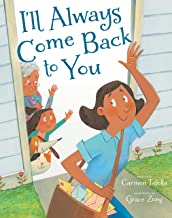 I'll Always Come Back To You
I'll Always Come Back To You
Carmen Tafolla and Grace Zong
A mom who is getting ready to go to work tells her daughter through various rhyming verses, that no matter what, she always come home to the girl. This is a brightly illustrated book that would be a fun read-aloud, allowing children to participate in the reading by repeating “I”ll always come back to you” when the time is right in the story. (Does not reflect RULER)
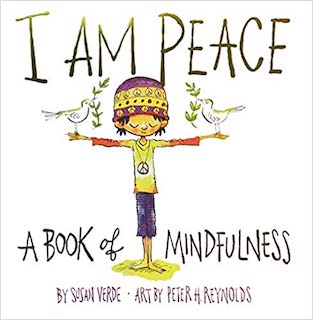
I Am Peace: A Book of Mindfulness
Susan Verde and Peter H. Reynolds
This book presents a deceptively simple story of a character who is overwhelmed with anxiety, finds peace, and then shares that peace with others. Through language and imagery, the metaphor of being carried away by rushing water without an anchor is used to convey the loss of control and overwhelming feelings that can accompany anxiety. Using mindfulness strategies, including breathing and connecting with nature, the main character begins to feel calm and grounded. The images show feet firmly planted, and the character affirms: “I can say what I feel inside out loud. I can share kindness with others.” Together, the images and text create an experience that is not only informative, but meditative, as the flow and beauty of the content can help to move readers from anxiety to peace as they make their way through the story. There are many possible uses for this book, including story times, counseling sessions, and children’s mindfulness or yoga classes. Children can also access and enjoy this title on their own. Ages 4-8. (RULR)
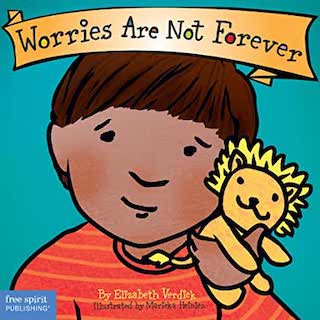 Worries Are Not Forever
Worries Are Not Forever
Elizabeth Verdick and Marieka Heinlen
Worries Are Not Forever is a sweet book for parents and preschoolers which can help explain what worries are, how they feel and how to manage those overwhelming uncomfortable feelings. As the titles suggests, the main idea is that you are bigger than your worries and they will not be around forever. There are several mindfulness strategies suggested to help with worrying and the illustrations help tell the story. I think this is great tool for toddlers and preschoolers, as the words are not too difficult, the book is short and to the point, but also informative. (RULER)
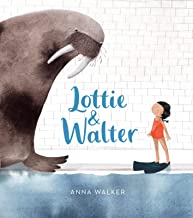 Lottie & Walter
Lottie & Walter
Anna Walker
Lottie and Walter is about a girl, Lottie, who is afraid to swim. She imagines there is a shark in the pool. Lottie sits on the side during lessons and is nervous about an upcoming pool party. An imaginary, friendly walrus named Walter appeared. Lottie and Walter play all week. At the party, Lottie is brave enough to swim when she realizes Walter is in the water. Lottie and Walter have a sweet friendship that gives Lottie the courage to get in the water. Her imagination caused her fear and her bravery. Ideal for families with children who have a fear caused by their own imagination. (RU)
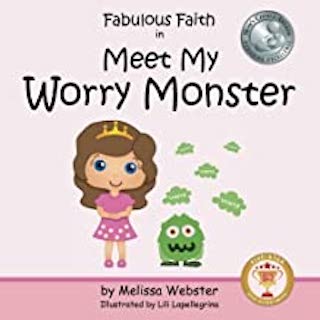 Fabulous Faith In Meet My Worry Monster
Fabulous Faith In Meet My Worry Monster
Melissa Webster
In Fabulous Faith in Meet My Worry Monster, Faith is ready to start school except for one sneaky thing, her worry monster named Stan. Stan keeps Faith worried by telling her that her mom will not come back after school to pick her up. Faith works hard all day to stay busy and not let Stan make her worry until she realizes she can activate her superpower of controlling her thoughts. When Fabulous Faith realizes Stan has no powers over her, her worry is gone. This text is a short read to help preschool aged readers practice visualizing worry and kicking it out of readers' minds. There is a short discussion/engagement activity at the end that can be used to help students draw their worry monster and help them practice not letting worries settle in their brains.
(RULR)
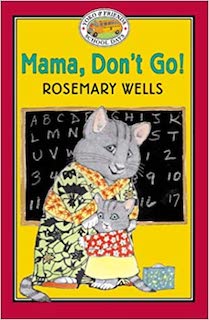 Mama, Don't Go!
Mama, Don't Go!
Rosemary Wells and Jody Wheeler
Mama, Don't Go is a story written about a little bunny, Yoko, who is very anxious about her mother leaving while she is at school. rather than having Yoko tough out the separation anxiety her mother and teacher work together and help Yoko see that even though her mother may have to leave, she will always return. This helps Yoko overcome her separation anxiety. Although a cute story, I do not believe this book is a great tool for instructional use, as it is not practical for a parent to remain at school with an anxious child. (Does not reflect RULER skills)
 Fly, Chick, Fly
Fly, Chick, Fly
Jeanne Willis and Tony Ross
In Fly, Chick, Fly, we see how the owl family is encouraging all three of their chicks to fly and leave the nest for the first time. The first two owlets fly off to start a new life, however the third owlet is really struggling with the what ifs that it keeps thinking. After some encouragement from the family, the third owlet flies off and is able to start a new family in a new tree. This story is very simple and would be good to use with preschool aged children, ages 3-5. This can be connected to many cross curricular activities and can be used to discuss fears young children may have about leaving families for the first time and how they manage. (R-Recognition)
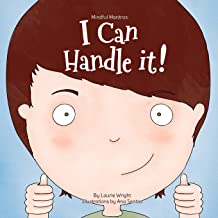 I Can Handle It!
I Can Handle It!
Lori Wright and Ana Santos
I Can Handle It! is a teaching book with no plot and one character. The character /narrator talks about feeling sad, disappointed, frustrated, annoyed, cranky, bored, and miserable. He explains how he can deal with frustrating situations such as being upset that the pool is closed and listing alternative activities. The illustrations convey the character’s emotions well. This book is ideal for adults who want to give children ideas of how to handle things that don’t go as planned. (RULER)
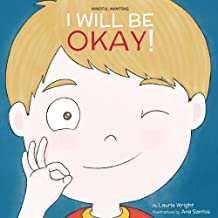 I Will Be OK!
I Will Be OK!
Lori Wright and Ana Santos
This book is part of the Mindful Mantra series and follows a little boy who has many feelings that he is dealing with. He grapples with anger, frustration, confusion, anxiety, worry, overwhelm, etc. Instead of focusing on his negative feelings, he thinks of ways to redirect his thoughts through various activities. The premise of the book is okay, but I don't think I would recommend this as a tool for parents or teachers. It oversimplifies anxiety and misrepresents how easy it is to stop intrusive thoughts and feelings. The illustrations are a bit outdated and may not appeal to current students.(RLER)
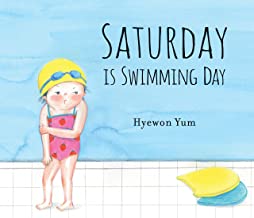 Saturday Is Swimming Day
Saturday Is Swimming Day
Hyewon Yum
Saturday is Swimming Day is about a young lady who gets stomach aches on Saturday before her swim lesson. The first lesson she stays on the side the whole time. The second lesson the teacher holds her while she swims. The third lesson, she didn’t have a stomach ache and got in the water willingly with the teacher’s help. Then she learned to float by herself. This story is a great demonstration how worry can physically affect you and how trying something you are scared to do can relieve your worry. Perfect for families and individual readers. (RU)

